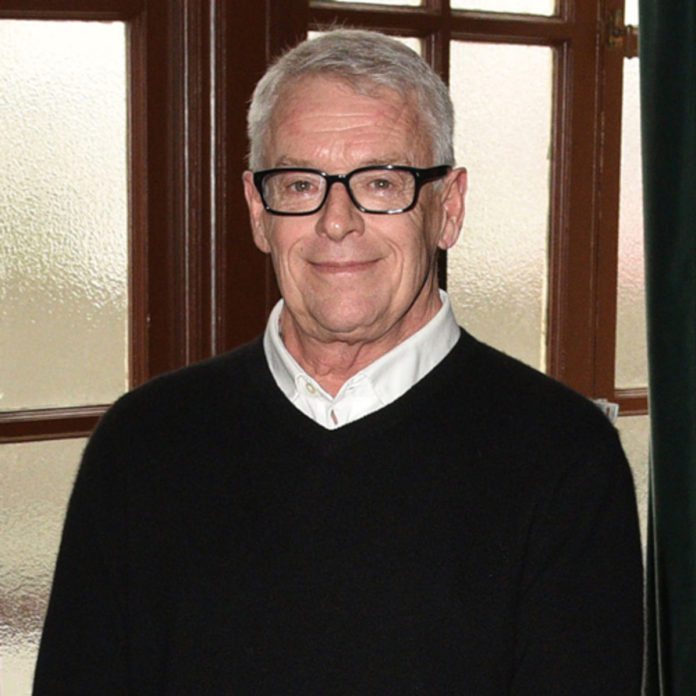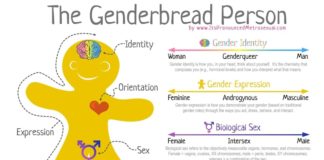
Activist Cleve Jones was mentored by Harvey Milk and came up with the idea for the NAMES Project AIDS Memorial Quilt.
Who Is Cleve Jones?
Cleve Jones is an LGBT activist who initiated the NAMES Project AIDS Memorial Quilt, an endeavor that brought attention to the AIDS epidemic in the 1980s and ’90s.”Everyone told me it wouldn’t work,” he said of the quilt in 2017. “But it ended up being the largest community-arts project in the world and touched the hearts of tens of millions of people across the planet.” In the 1970s, Jones was mentored by gay politician Harvey Milk; he later served as a consultant for the 2008 film Milk. Jones’ memoir When We Rise: My Life In The Movement was published in 2016; it served as inspiration for a miniseries of the same name that aired in 2017.
Early Life
Jones was born on October 11, 1954, in West Lafayette, Indiana. Jones’ childhood was spent in New York, Pennsylvania and Arizona. He was raised as a Quaker. As his father was a psychologist, Jones had access to materials that delineated the era’s views on homosexuality; he has stated,”It was pretty horrifying for a 13, 14-year-old kid to learn suddenly that his feelings are not only deemed criminal, but, you know, psychologically an illness.”
Jones was bullied in middle school and high school and felt isolated due to his sexuality. He has said that at the age of15 he planned to kill himself. What changed his plan was a 1971 article in Life magazine, “Homosexuals in Revolt.” The story alerted Jones to the fact that there was a community of gay people he could join.
Jones did not inform his parents he was gay until he was an adult. He made this choice because he feared his father would force him into aversion therapy or electroshock treatments.
Entry Into Activism
Jones moved to San Francisco in the early 1970s. There, he interned for Milk, a barrier-breaking openly gay politician, while also studying political science at San Francisco State University.
In 1978, California’s Proposition 6, which would have prevented gay people from holding any positions in the state’s public schools, was on the ballot. Jones helped arrange for gay student groups to organize against the proposition. Defying predictions, it was defeated at the polls.
Milk was elected to the San Francisco Board of Supervisors in 1977 but was assassinated by a former supervisor in 1978. Jones arrived on the scene that day and saw his mentor’s dead body. He said in 2016,”I knew by the end of the day that that was the single-most important moment of my life, and it was the single most important thing that had happened to me. Meeting Harvey, seeing his death, it’s — it fixed my course.”
HIV Diagnosis
Following Milk’s death, Jones began working with the speaker of the California state assembly. His portfolio comprised gay rights and health issues. In 1981, this job’s duties meant Jones was reviewing reports that gay men were experiencing illnesses such as pneumocystis pneumonia and Kaposi’s sarcoma. In 1983, he co-founded the San Francisco AIDS Foundation. Jones was diagnosed with HIV in 1985 after a test became available for the first time.
After Jones went public with his diagnosis, he received death threats, and one night was stabbed on the sidewalk outside his apartment. He survived, but people around him were succumbing to AIDS.”My circle was hit hard and hit early,” he told Frontline. “By 1985, almost everyone I knew was dying or already dead.”
The AIDS Quilt
In 1985, Jones was frustrated by a lack of action and official help in the AIDS crisis.”Nobody cared. Nobody cared,” he said. “There was no response of any kind from the government, from the medical establishment. We were completely on our own.” Prior to a candlelight tribute to Milk and George Moscone, the mayor of San Francisco who was murdered along with Jones’ mentor, Jones read that 1,000 people in San Francisco had died of AIDS. At the gathering on November 27, 1985, Jones decided to have attendees commemorate the dead by writing their names on poster board.
After the march, the pieces of cardboard bearing names of the dead were taped to the Health and Human Services building in San Francisco. Seeing this display reminded Jones of a quilt, and provided inspiration for what would become the NAMES Project AIDS Memorial Quilt. The project would allow friends and family to honor people lost to AIDS by adding their names to panels of fabric that were joined together to form a quilt.
Initially few people agreed that Jones’ idea was worthwhile. But a friendencouraged him, and in 1987 Jones and others began making their own panels. When about 40 of these were finished, they went on display at San Francisco’s City Hall during the Lesbian and Gay Pride Parade, demonstrating the quilt’s potential. Soon the quilt began to receive submissions from across the country.
During the National March on Washington for Lesbian and Gay Rights in October 1987, 1,920 panels of the AIDS Memorial Quilt were shown. After this, the quilt toured the country and raised awareness of the toll of the disease. In 2020, Jones said,”The Quilt helped change the hearts and minds of millions of people. It showed that all the lives had value, that all of these people were loved, had family and friends, and were part of a community.”
AIDS Treatment
Even as awareness of AIDS grew with the quilt, people were still dying. Jones lost a former partner to suicide in the early 1990s when his health started to deteriorate and became gravely ill himself in 1993. But in November 1994, Jones began taking a medical cocktail that saved his life. With this type of treatment, AIDS was no longer a death sentence for Jones and others.
‘Milk’ Movie
In 2008, Milk, a movie about Harvey Milk, was released. Jones served as a historical consultant on the film. He was also a character in the movie, played by actor Emile Hirsch.
Continuing Activism
Jones has remained an activist throughout his life. In 2005, he began working for UNITE HERE! to organize hospitality workers. Following the success of Proposition 8 in California in 2008, which banned same-sex marriage in the state, he helped organize a National Equality March that was held in Washington, D.C., on October 11, 2009 (marriage equality was legalized nationwide by the Supreme Court in 2015).
As the COVID-19 pandemic took hold in 2020, Jones compared the bigotry of calling AIDS a “gay cancer” to those who named COVID the “Chinese virus”. He declared,”No virus has a nationality. No virus has sexuality.” He also spoke out against how the deaths of older people were dismissed during the pandemic, saying,”During AIDS, I was disposable because I’m a faggot. Now I’m disposable because I’m a fogie.”
The AIDS Memorial Quilt had been stored in Atlanta for years, but in 2020 Jones was gratified when it returned to San Francisco. The quilt, with more than50,000 panels and 105,000 names, is in the care of the National AIDS Memorial in San Francisco.
Books
Jones wrote Stitching a Revolution (2000). He also authored the memoir When We Rise: My Life In The Movement (2016). When We Rise inspired a miniseries of the same name that aired in 2017. Jones was a consultant on the project. Onscreen he was portrayed by Guy Pearce as an adult and by Austin P. McKenzie as a young man.







